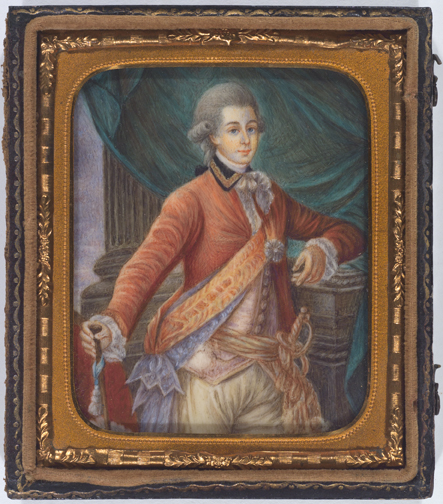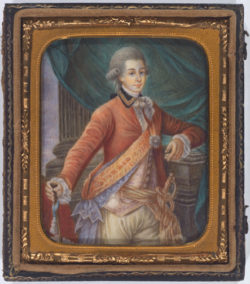Manuel Luis Gayoso de Lemos y Amorin
Manuel Luis Gayoso served as governor of the Spanish colonies of Louisiana and West Florida from 1797 until his death in 1799.

Courtesy of The Historic New Orleans Collection
Don Manuel Luis Gayoso de Lemos. Unidentified
Manuel Luis Gayoso served as governor of the Spanish colonies of Louisiana and West Florida from 1797 until his death in 1799. A natural diplomat and an extravagant entertainer, he was popular with both the Anglo-Americans in the Natchez District, then part of West Florida, and the French in Louisiana. His outgoing personality and fluency in both English and Spanish allowed him to play a central role as boundary disputes between Spanish and US officials peaked.
Born in Oporto, Portugal, on May 30, 1747, Manuel Luis Gayoso de Lemos y Amorin was the son of Manuel Luis Gayoso de Lemos y Sarmiento and Theresa Angelica de Amorin y Magallanes. Relatively little is known about his early life, but Gayoso may have been educated at Westminster College in England. He entered the Spanish Army in 1771 and was promoted to lieutenant colonel in 1786.
Gayoso was named governor of the Nahotchez district in 1787 and remained in that position until 1795 when Spain officially ceded the district to the United States with the Treaty of San Lorenzo, also known as Pinckney’s Treaty. Gayoso remained in Natchez for another two years, helping smooth the transition, until King Charles IV appointed him governor-general of Spanish Louisiana and West Florida in 1797. His fluency in Spanish and English enabled Gayoso to communicate with Americans encroaching on the border at a time when Spanish officials feared US expansion. In anticipation of this possibility, Gayoso strengthened Spanish defenses while in office.
During his lifetime, Gayoso was married three times. Around 1787, he married Theresa Margarita Hopman y Pereira, with whom he had two children. In 1792 he married Elizabeth Watts of the Natchez district. When she died later that year, Gayoso married her sister, Margaret Cyrilla Watts. He died in office in New Orleans on July 18, 1799, during an outbreak of yellow fever. His body is interred beneath the altar of St. Louis Cathedral.
Adapted from Jessica Fearrington Travis’s entry for the Dictionary of Louisiana Biography, a publication of the Louisiana Historical Association in cooperation with the Center for Louisiana Studies at the University of Louisiana, Lafayette.
Sources: Jack D. L. Holmes, Gayoso: The Life of a Spanish Governor in the Mississippi Valley, 1789-1799 (1965); Clayton Rand, Men of Spine in Mississippi (1940)
